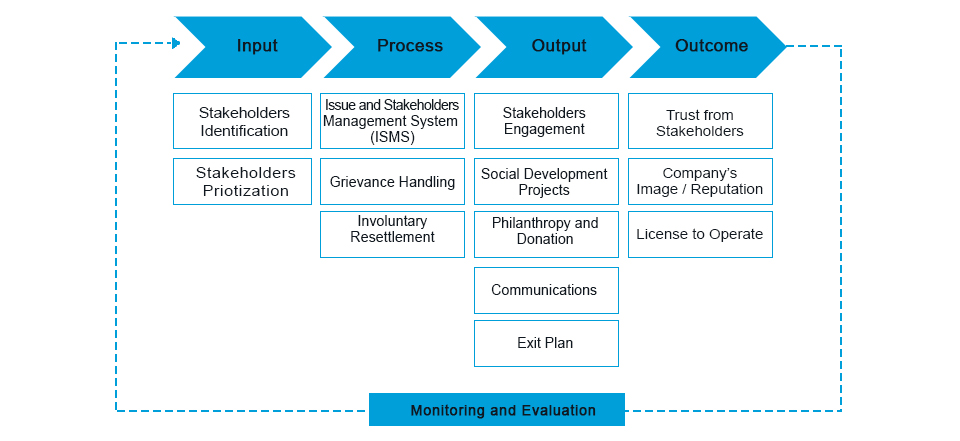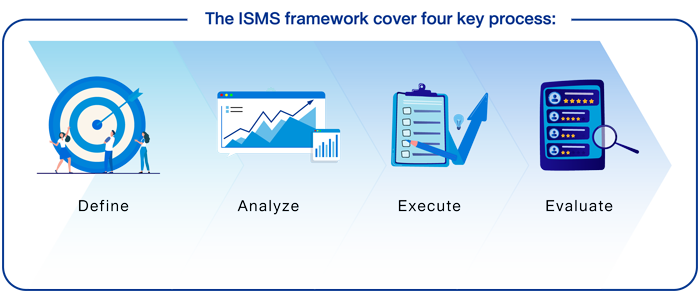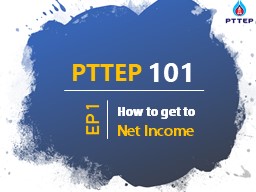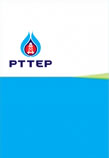Sustainability
Stakeholder Management
Importance and Mission
- PTTEP is committed to Stakeholder Management, encompassing individuals, agencies and organizations who affect and/or could be affected by an organization's activities, also who are interested in or relevant to the Company's operations.
- Clear identification of stakeholder paves way for clear roles and responsibilities of related parties to drive the stakeholder management implementation.
Goals
- To appropriately manage stakeholder expectation
- To gain stakeholders' trust, good relationship and engagement
Stakeholder Management
Stakeholder Management is essential in reducing undesirable impacts and creating positive impacts on society and PTTEP's operations. In this regard, PTTEP has developed a Stakeholder Management Guideline for group-wide implementation, providing guidance to all departments. Stakeholder identification and prioritization enables PTTEP to put in place a proper engagement plan. The proper implementation of stakeholder engagement shall also depend on the situation and the circumstances of each operation.

Issue and Stakeholder Management
One of key success factors for PTTEP to be a sustainable company is to build and strengthen relationships with stakeholders, while mitigating the operational impacts on community and the environment. PTTEP has therefore developed the Issue and Stakeholder Management System (ISMS) as a standardized tool to evaluate social risks for both domestic and international operations. It is a proactive system with a guideline on how to analyze, plan, evaluate, and monitor social impacts. With emphasis on social risk analysis, ISMS demonstrates that social risks can be mitigated by controlling operational impacts on community, initiating or amending existing social programs as appropriate, as well as properly treating stakeholders.

The ISMS framework covers four key processes:
- Define: Clearly define an objective in relation to internal and external context which may impact the objective.
- Analyze: Identify, evaluate, and prioritize social risks and stakeholders in order to prepare an issue and stakeholder management plan.
- Execute: Implement an issue and stakeholder management plan and monitor progress.
- Evaluate: Evaluate the effectiveness and communicate results to stakeholders.
ISMS is applied throughout project lifecycle from exploration and production to decommissioning. Since 2015, PTTEP has demanded all operating sites operated by PTTEP worldwide analyze social risks with ISMS, which ensures the Management's effective decisions in tackling social issues. To ensure effective deployment, Public Affairs staff of each operating asset shall revisit the social risk analysis and submit a report through ISMS Report Online System to Headquarter annually. Furthermore, on a monthly basis, Public Affairs officers at each location shall monitor the progress and result of engagement activities, and report to Headquarter. ISMS is expected to pinpoint social risks that should be considered in the business decision process. The identification of social impacts through ISMS is also expected to result in the development of an appropriate mitigation plan and social development plan, which enables PTTEP to act in the best interests of stakeholders and the Company.
Stakeholder Engagement
PTTEP has organized activities to engage all key stakeholders relevant to the Company's operations, for clarity in management, communications, cooperation, collaboration, and reciprocal supports. PTTEP categorized stakeholders into nine main groups.

- Government Agencies and Regulators: Government agencies, ministries, ministerial departments, and state-owned enterprises on national, regional, and provincial levels, as well as agencies that directly regulate and supervise business operations.
- Vendors, Suppliers/Contractors:
- Suppliers: Individuals or juristic entities that supply products and services to the Company
- Contractors: Individual or juristic entities that are contracted to execute specific tasks as specified in contracts.
- Customers: Those who purchase PTTEP's products and services.
- Employees: PTTEP and PTTEP Group's personnel
- Shareholders, Investment & Financial Institutions and Creditors
- Business Partners, Consortium, Joint Ventures
- Communities: Community, the government, local authorities, occupational groups and volunteer groups that operate in district, sub-district, and community levels.
- Independent/Public Organizations, NGOs and Academics: such as the Institute for the Promotion of Teaching Science and Technology (IPST), educational institutions related to business operations and non-governmental organizations (NGOs).
- Press and Media: Mass media, news agencies, local and international news stations, social media, public influencers, and bloggers.
Stakeholder Engagement Activities
Stakeholder engagement activities are two-way communication channels that provide the Company an opportunity to hear opinions, concerns, and expectations and to communicate the Company's perspectives and ideas. Furthermore, the company enable affected communities to express their views on operational and project risks, cultural heritage preservation and other environmental and social impacts and mitigation measures. Stakeholders' issues will be considered, to improve the operational efficiency.
In 2022, PTTEP received 1 complaint from community regarding non-hazardous liquid found in the vicinity of the operation. The issue had been resolved and closed out.
Stakeholder Engagement and Expectation
PTTEP conducts an annual stakeholder inclusiveness survey on the Company's sustainability issues through interviews and questionnaires. The issues obtained from the stakeholder engagement are input to prioritize and improve company strategy as well as the efficiency of our business operations. In 2022, issues raised by stakeholders and our implementation are as follows:
- Energy Transition towards Net Zero
- Technology and Innovations
- Governance, Risk Management, and Compliance
- Safety, Security, Health, and Environment
- Contribution to Communities and Society
- Human Resource Preparation
- Circular Economy
- Biodiversity Impact Management
- Supply Chain Management
- Cybersecurity
- Human Rights
- Stakeholder Management
To effectively manage PTTEP stakeholders, engagement approaches are specifically defined (but not limited to) for each stakeholder group.
| Stakeholder | Engagement Approach |
|---|---|
| 1. Government agencies, Regulators |
|
| 2. Vendors, Suppliers/Contractors |
|
| 3. Customers |
|
| 4. Employees |
|
| 5. Shareholders, Investment & Financial Institutions and Creditors |
|
| 6. Business Partners, Consortium, Joint Ventures |
|
| 7. Communities |
|
| 8. Independent/Public Organizations, NGOs, Academics |
|
| 9. Press and Media |
|
Stakeholder Complaint Management
Grievance Mechanisms
PTTEP puts in place various complaint-receiving channels to facilitate stakeholders. At operation sites, stakeholders can send complaints directly to the on-site Public Affairs staff, Operation staffs or to PTTEP staff at Headquarters. Currently, there are two mechanisms for reporting complaints:
1. i-SSHE System: Having trained officers register incidents or community's complaints to a web-based system.
2. PTTEP website: Grievances can be filed on "Contact Us" web page or to Hotline number +66 (0) 2537-4000, which gather all reports. Business functions can monitor relevant issues for remedial actions, by accessing PTTEP Whistleblowing System.
In addition, PTTEP has developed the Grievance Handling Guideline as a formal process to handle stakeholders' complaints on impacts from PTTEP's operations or activities. Furthermore, monitoring of issues or complaints of operating assets is conducted on quarterly basis to ensure that each complaint is addressed and resolved in a timely manner. While IMS is used to monitor the handling of complaints, Grievance Record Form will keep track of the handling until the complaints are resolved.
For more information, please visit Grievance and Issue Handling Guideline
Social Impact Management
Uplifting a sense of responsible operations under international safety standards and commitment towards sustainable and mutual growth, PTTEP conducts a comprehensive risk and social impact assessment for all levels of operations. This is done in order to determine safety measures; reduce/eliminate risks and/or impacts that may occur in the line of work; identify stakeholders that may be affected directly or indirectly by the operations; formulate communications plan with stakeholders; and prepare project communication brochures containing information on possible impacts, mitigation measures and channels for inquiries, complaints, community concerns and suggestions. Any complaints, concerns, or suggestions will be used improve actions and business plans, to minimize impacts on community and stakeholders.
In the event that a stakeholder was bothered and/or suffered losses from the Company's operations, the stakeholder/the affected person can file a complaint directly to the staff of the Company and/or contractors through the channels specified in the project communication brochure. Upon receiving the complaint, PTTEP will contact relevant unit to make an on-site investigation, evaluate the impact/loss and devise a plan to eliminate, mitigate and compensate the loss (if any). Then, the Company will inform the complainant and relevant parties of the action plans and seek their acknowledgement of the solution/mitigation plan and compensation (if any). Action plans will then be implemented immediately as specified in Stakeholder Management Guideline.
Relocation
Petroleum exploration and production activities sometimes require access to public or private properties. Gaining the access often leads to the relocation of dwelling or places to make a living and stakeholders have to witness loss of assets, housing, or sources of income.
In gaining the access, PTTEP aims to receive the full consent of landlords or land users rather than through law enforcement. Therefore, PTTEP commits to disclose the displacement eligibility and entitlements as early as possible in project planning. Additionally, PTTEP Involuntary Resettlement Guideline (shown below) has been developed as a guideline for the implementation of key activities to minimize the acquisition of land resulting in physical or economic displacement, the impacts of relocation and maintain relationship with stakeholders. PTTEP has so far never forced the relocation of any community.

For more information, please visit Involuntary Resettlement Guideline
Preservation of Culture and Indigenous Peoples
Committed to sustainably growing along with community and society, PTTEP respects rights, equality, and ethnic diversity in all operating areas. In all operational procedures, PTTEP has identified stakeholders involved with the operations and/or project implementation, taking into account the impacts on community and indigenous peoples' ways of life, beliefs, cultures, and traditions. Stakeholder identification helps in communication planning and the process to build understanding, educate, support and/or foster acceptance. The process entails communications with stakeholders; and the preparation of project communication brochures in easy-to-understand local languages which contain possible impacts from the project and/or prevention/mitigation measures, as well as channels for inquiry and/or complaint or community concerns and suggestions. All concerns and suggestions are used to improve measures and/or project implementation plans, to minimize impacts on the ways of life of stakeholders, community and indigenous peoples.
In the event that an individual of an Indigenous Peoples group was bothered and/or suffered losses from the Company's operations, the individual/Indigenous Peoples group can file a complaint directly to the staff of the Company and/or contractors through the channels specified in the project communication brochure. Upon receiving the complaint, PTTEP will contact relevant unit to make an on-site investigation, evaluate the impact/loss and devise a plan to eliminate/mitigate/compensate the loss (if any). Then, the Company will inform the complainant and relevant parties of the action plans and seek their acknowledgement of the solution/mitigation plan and compensation (if any). Action plans will then be implemented immediately as specified in Stakeholder Management Guideline.



 ...the sea has become our home and so we are conscious of our responsibilities...
...the sea has become our home and so we are conscious of our responsibilities...




 PTTEP is E&P company in Thailand, exploring for sustainable sources of petroleum for the countries we operate
PTTEP is E&P company in Thailand, exploring for sustainable sources of petroleum for the countries we operate
 SIGN IN
SIGN IN SEARCH
SEARCH
 Stakeholder Management Guideline(as of 30 April 2021)
Stakeholder Management Guideline(as of 30 April 2021)


